U.S. presidents receive thousands of gifts per year from foreign dignitaries, celebrities and everyday, regular Americans. These are among the strangest recorded presents in history.

13 Lavish—and Sometimes Strange—Gifts Given to U.S. Presidents

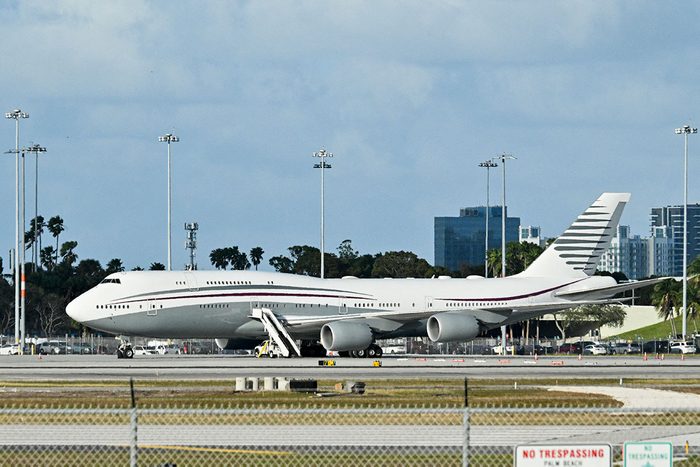
Trump’s “flying palace”
In May 2025, President Donald Trump announced that his administration was preparing to accept a $400 million luxury jet from the Qatari royal family. The “flying palace,” as the Boeing 747-8 is known, would serve as the new Air Force One until shortly before Trump leaves office. At that time, ownership of the plane would be transferred to the Trump Presidential Library Foundation, ABC News reports. Although Attorney General Pam Bondi concluded that the gift would be “legally permissible,” it’s unclear how this arrangement wouldn’t be a violation of the Constitution’s emoluments clause. Trump said he would be a “stupid person” not to accept the gift, calling it a “great gesture” by Qatar.
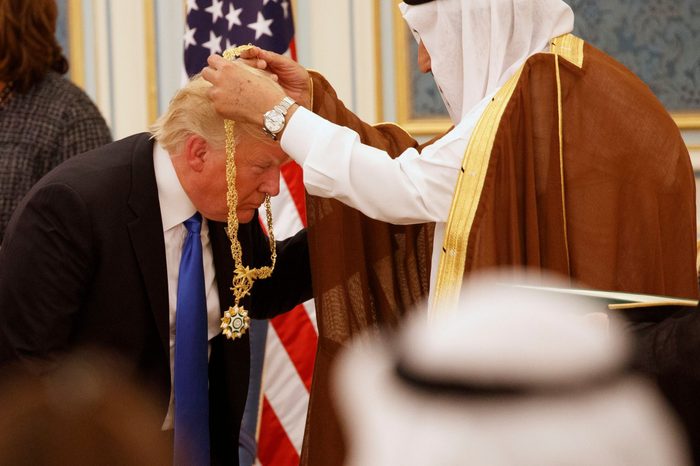
Trump’s treasure trove from Saudi Arabia
President Trump received 83 gifts from Saudi Arabia during his trip to the Middle East in May 2017, according to a document The Daily Beast obtained via a Freedom of Information Act request to the State Department. These gifts included artwork featuring the president himself, swords, daggers, fur robes (made from tiger and cheetah), scarves, shirts, a hoodie, a chiffon yellow and turquoise dress (for Melania?) and many, many pairs of sandals.
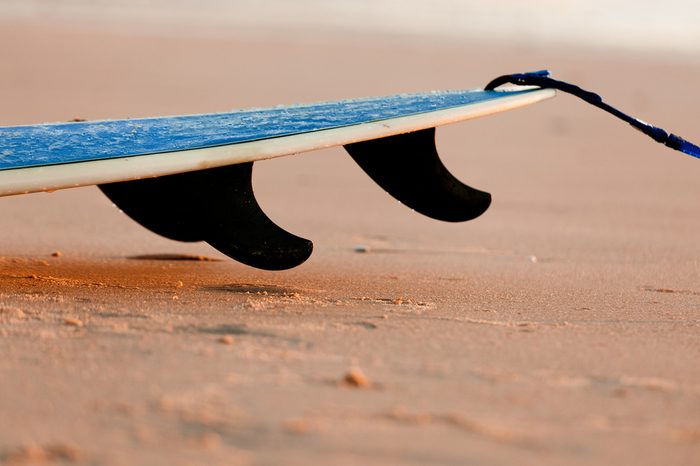
Surf’s up, Obama
In 2014, Australian Prime Minister Tony Abbott wanted to demonstrate his admiration for President Obama, so he sent the president a nine-foot longboard. The surfboard is blue and white—the colors of Air Force One—and bears the Presidential Seal. Initially, when the manager of the surfboard factory got a call asking him to make a board for Obama in one week’s time, he thought it was a hoax.
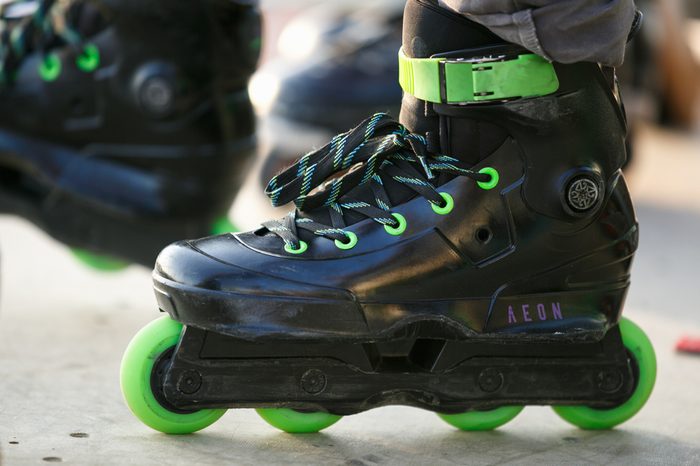
George W. Bush skates by
In 2008, Dutch Prime Minister Jan Peter Balkenende gave President George W. Bush a set of inline skates, complete with wrist guards, knee pads and elbow pads. But that’s not all: Balkenende also presented Bush with white wooden clogs with windmills painted in blue. According to the Office of Protocol, the rollerblades and clogs had an estimated value of $762.00.

Nixon’s panda-monium
At a 1972 dinner in Beijing, First Lady Patricia Nixon mentioned in passing that she had a fondness for giant pandas. Chinese Premier Zhou Enlai took it as a hint and sent two giant pandas to the Nixons as a gesture of goodwill following the president’s historic state visit. Technically, they were a gift to the American people. Ling-Ling (a female) and Hsing-Hsing (a male) spent the next 20 years living at the Smithsonian Institute’s National Zoo, drawing millions of panda fans to visit them.
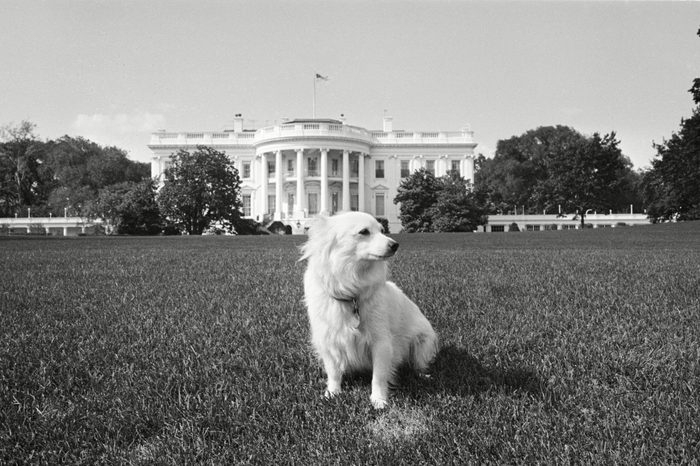
Kennedy and the pup
During the Cold War, Soviet leader Nikita Khrushchev and President John F. Kennedy maintained a seemingly pleasant correspondence and even exchanged gifts. But if you read between the lines, you can see a tinge of passive aggressiveness—particularly from Khrushchev, who in 1961 gave Kennedy a dog named Pushinka (which means “fluffy” in Russian). As it turns out, Pushinka was the offspring of a dog the Soviets had successfully sent into space, placing them ahead of America in the “space race.” Kennedy responded by pledging to put a man on the moon by the end of the 1960s. Pushinka found a happy home at the White House and on Cape Cod with the Kennedy children and even went on to have puppies.

Truman’s bowling alley
In 1947, President Harry S. Truman was gifted with an automatic two-lane bowling alley in honor of his 63rd birthday. Truman’s press secretary, Charles G. Ross, said the gift was from a group of “anonymous friends.” The president agreed to bowl a few frames for a photo op, and he once knocked down eight pins out of ten. Though he didn’t care for bowling himself—he preferred playing poker—Truman allowed White House staff to form a league. But the fun didn’t last: In 1955, Dwight Eisenhower replaced it with a mimeograph room. Eventually, a new bowling alley was constructed next door in the Old Executive Office Building. Then, in 1973, President Richard Nixon had a one-lane bowling alley installed in the White House.

The FDR badge of honor
In 1933, the young actress Shirley Temple met President Franklin Delano Roosevelt and First Lady Eleanor Roosevelt when the Roosevelts were visiting Hollywood. Five years later, when Temple visited the Roosevelts at the White House, she presented FDR with a “Shirley Temple Police” Badge. The letter that came with the badge read:
“Dear Mr. President,
Here is your badge to my Police force.
Love, Chief Shirley Temple”

Hayes and the Resolute desk
In 1880, Queen Victoria gifted President Rutherford B. Hayes with an ornate desk carved out of timber salvaged from the British ship the HMS Resolute, which the United States had helped search for and rescue from the Arctic Ocean in 1855. The oak timber partner desk was kept at the president’s office on the second floor of the White House until 1902 when it was moved to the president’s study in the newly built West Wing. The desk can be seen in many famous presidential photographs and was in use until February 2025, when President Trump had it removed from the Oval Office to be “lightly refinished,” USA Today reports.
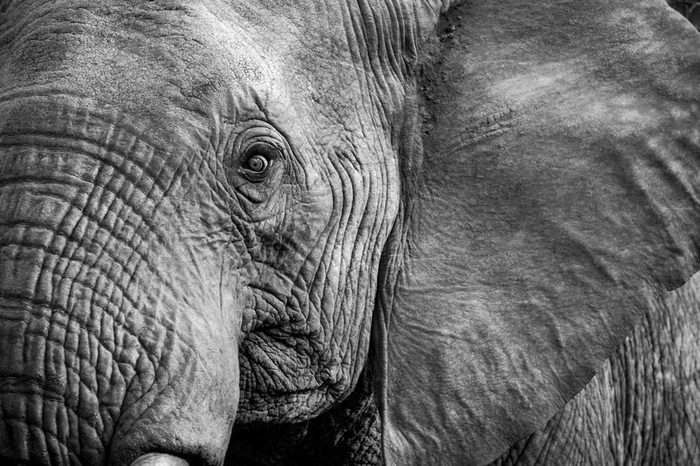
Lincoln’s elephants in the room
In 1862, the King of Siam offered the president of the United States (whom he mistakenly thought was James Buchanan, but it was actually Abraham Lincoln, Buchanan’s successor) a gift of live elephants. The offer came with other gifts, including a sword, a photograph of the king and his daughter, and two elephant tusks. President Lincoln politely declined the elephants in a letter dated February 3, 1862, noting that the U.S. relies on steam power on land and at sea, rather than the strength of large animals.
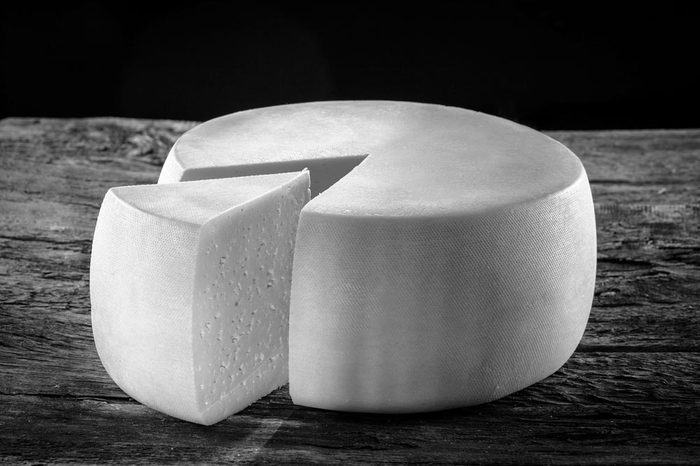
Jackson’s big cheese
In 1835, a dairy farmer from Oswego County, NY, presented President Andrew Jackson with a 1,400-pound wheel of cheese decorated with mottos and paintings. For two years, the cheese wheel stayed in the foyer of the White House, but finally, in honor of George Washington’s birthday celebration in 1837, Jackson invited the public to enjoy some free cheese. Every last bit of the cheese was gone before two hours had passed—save for the smell. That was rumored to live on quite a long time.
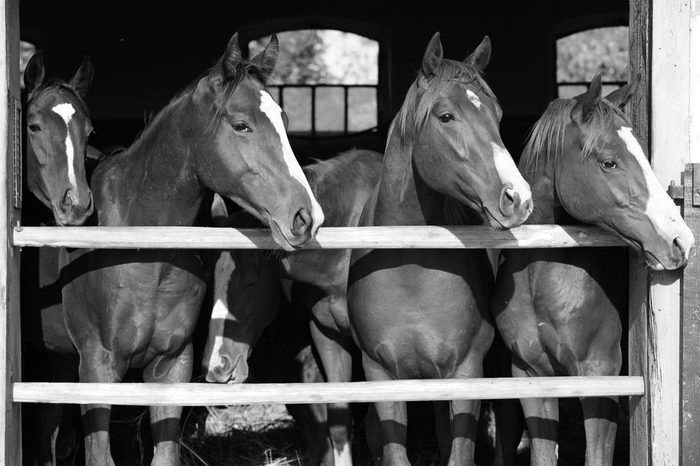
Jefferson’s four-horse exception
As president of the United States, Thomas Jefferson maintained a strict policy of not accepting valuable gifts from foreign dignitaries, but in 1806, he made an exception when a Tunisian ambassador presented him with four Arabian horses. How did Jefferson justify accepting such a generous gift? He intended to sell them and use the proceeds to offset the American government’s cost of the ambassador’s visit.

Washington’s “Royal Gift”
George Washington wanted a mule because he believed this cross between a donkey and a horse would revolutionize farming in America (because mules are sturdier than horses). But acquiring a mule was more complicated than one might think, particularly since the kind Washington wanted was bred only in Spain. Luckily, word traveled to the King of Spain, who shipped Washington a Spanish mule. It arrived on October 7, 1785, and Washington named him “Royal Gift.”
About the expert
|
Why trust us
At Reader’s Digest, we’re committed to producing high-quality content by writers with expertise and experience in their field in consultation with relevant, qualified experts. We rely on reputable primary sources, including government and professional organizations and academic institutions as well as our writers’ personal experiences where appropriate. We verify all facts and data, back them with credible sourcing and revisit them over time to ensure they remain accurate and up to date. Read more about our team, our contributors and our editorial policies.
Sources:
- David Greenberg, PhD, professor of journalism, media studies and history at Rutgers University and author of Republic of Spin: An Inside History of the American Presidency
- U.S. General Services Administration: “Foreign Gifts”
- Mount Vernon: “Royal gift (donkey)”
- Monticello: “Gifts from foreign dignitaries”
- National Portrait Gallery: “The big cheese: Presidential gifts of mammoth proportions”
- American Battlefield Trust: “Lincoln rejects the king of Siam’s offer of elephants”
- The White House Historical Association: “Treasures of the White House: ‘Resolute desk’”
- USA Today: “Trump removes 150-year-old Resolute Desk from the Oval Office to be ‘lightly refinished’”
- Franklin D. Roosevelt Presidential Library: “Shirley Temple Black”
- New York Times: “Opening the White House bowling alley”
- The Week: “Today in history: The White House gets a bowling alley”
- The White House Historical Association: “President Richard Nixon bowling at the Executive Office Building in 1970”
- BBC: “Pushinka: A Cold War puppy the Kennedys loved”
- Smithsonian Institute’s National Zoo: “The history of giant pandas at the Smithsonian’s National Zoo and Conservation Biology Institute”
- Federal Register: “Office of Protocol; Gifts to Federal Employees From Foreign Government Sources Reported to Employing Agencies in Calendar Year 2008”
- Daily Telegraph: “Surfboard diplomacy: Tony Abbott wants to ensure Barack Obama is Australia’s best mate”
- The Daily Beast: “The insane gifts Saudi Arabia gave President Trump”
- New York Times: “Trump gifts from Saudi Arabia: Tiger fur robes and chiffon dresses”
- Washington Post: “Trump’s gifted Qatari 747 would be a security problem, officials say”
- ABC News: “Trump administration poised to accept ‘palace in the sky’ as a gift for Trump from Qatar: Sources”
- New York Times: “Trump’s plan to take jet from Qatar heightens corruption concerns”




















